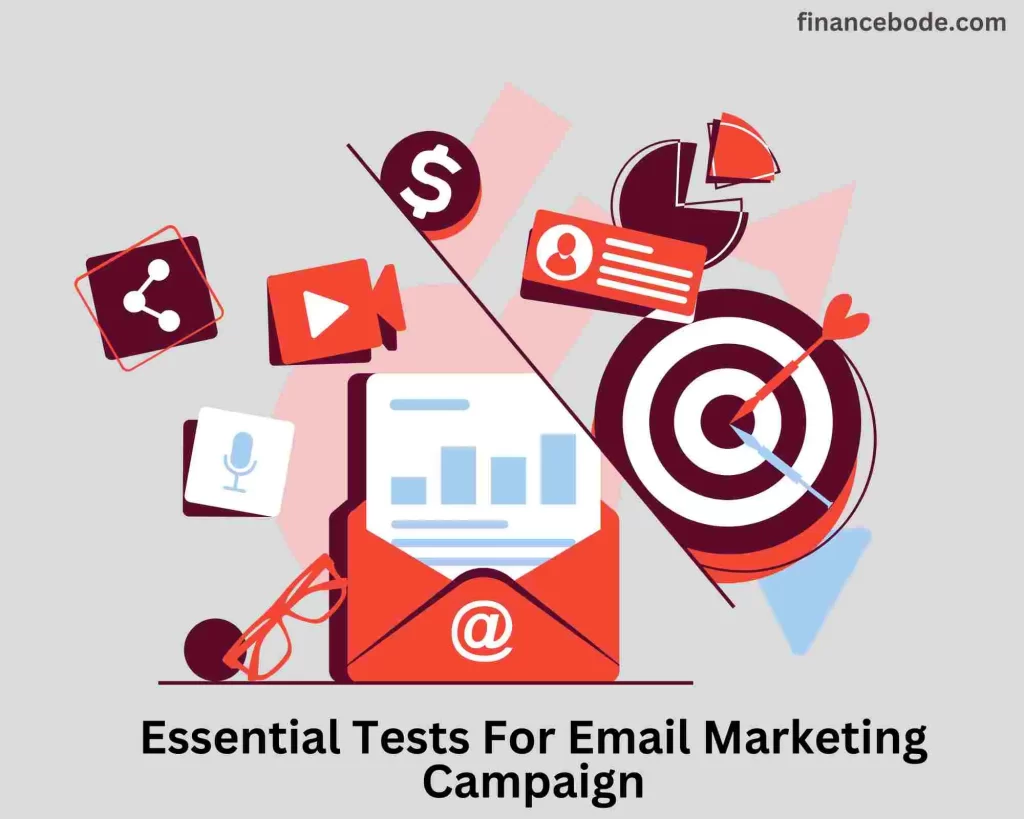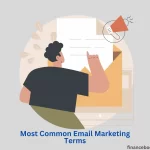Every successful email marketing campaign usually comes with tests. No matter how you implement every theory or experience of the forerunners, there is no assurance of effective email marketing in the first place. Because each industry has its unique characteristics of goods and services, and the customers are not always the same.
To be able to extract the best email marketing techniques for your business, there is no other approach than to “TEST”. This strategy helps to discover what works or doesn’t work.
In today’s blog post. Let’s find out 9 essential tests for any email marketing campaign.
See also: What is A/B Testing?
What Is Testing For Email Marketing?
The term “Testing for email marketing” refers to the iterative process of executing regular tests to identify what content, offers, subject lines, and other relevant elements best engage your subscribers.
A/B testing is likely the most popular approach to assess subscriber reaction to a specific email marketing aspect because A/B tests randomize receivers.
Additionally, just a single element is examined at a time, which produces the most reliable findings. Most high-quality Email Service Providers will enable you to A/B test email campaigns directly within their software, making it quick and convenient to learn about how your audience responds to various kinds of content.
Learn more: How to select the best email service provider?
Why Is Testing For Email Important?
Testing your email content in email marketing is vital for various reasons:
- Testing enables you to compare and contrast various components of your email messages to determine how they affect your subscribers’ responses.
- The more effective you’ll be as an email marketer. You can make a hypothesis about what you believe will occur and then construct a test and find out what truly happened. The better you become at communicating with your audience, winning their trust, and eliciting certain emotions,
- Your list will expand quicker. The individuals on your list will tell their friends about what you’re doing (generating word-of-mouth buzz),
- You’ll receive more clicks, opens, and conversions, and your company will prosper.
If, on the other hand, you denied testing your email marketing, the reverse will be true:
- Your email campaign success will rely on cold, hard luck.
- Even though your initial concept for an email campaign or a CTA or a subject line could be excellent, your drive might not still be successful.
- You need to take the time to test and improve your email marketing to avoid engaging your subscribers.
The only way to constantly improve your efforts and become a great email marketer is to test, learn, iterate, and repeat.
9 Essential Tests For A Good Email Marketing Campaign
1. Test your email marketing presentation and design.
Email template design

You may utilize the existing templates or make your own. Before bulk transmission, test the visibility of those samples. You may edit a few tiny things in the email, like fonts, colours, photos, etc. Then send the test to a small sample of clients. The objective is to discover the design pattern that best interacts with the audience.
Read our full guide on How to design an email that would get opened.
Selecting an image for an email
Email marketing professionals typically suggest incorporating graphics in emails. But what format should the image be in? What size? Is there a rule concerning the hue of the image? Should I select an image that depicts a particular product or an overall image of the business?
Experiment with various visuals in your email marketing campaigns. Then, examine the recipient’s interactions to identify which alternatives appeal to them.
Recommended Reading: Designing images in email
2. Test when and how frequently to send emails
What day of the week should you send emails:
What day of the week you should send emails is also a very tough issue.
There has also been published and comprehensive research on the time of the week to send emails to certain places. However, the majority conduct their campaigns on Tuesdays, Wednesdays, and Thursdays.
However, take your time following the aforesaid trend. It’s a good idea to try with each of the various groups on your list because it is doubtful that the people you are targeting would have wished to receive emails at those times.
Test to find out which days will deliver the greatest open and click rates for your email marketing campaigns.
See also: When to send email to increase open and click rates.
What time of the day should you send emails:
Same as above. After you’ve tested the best day of the week to send an email, the next thing is to know the best time your subscriber will want to receive your email.
Also, test to derive the proper conclusions on the best time to run the email campaign that generates the best open rates.
Once you’ve incorporated the above two elements, you will have the optimal timetable for sending emails.
Read our guide on The best time of the day to send an email.
3. Test your subject line
The email subject line is like the headline of a newspaper or an article, ..it is regarded as the initial contact point when the reader approaches the email. So the subject line has to attract their attention to enhance open email rates.
However, be beautiful and attractive but avoid overdoing it and avoid the subject line that doesn’t denote the information in the email.
There are numerous occasions when the subject line is highly enticing; however, clicking through read email has nothing to do with the subject line at all. This produces a really terrible impression on your consumers. Therefore the headline merely has to be appealing ENOUGH to create interest.
So how to make a captivating headline?
The following strategies can assist you:
- A question creates headlines because it requires the receiver to stop and think about how the material will answer the query. For example: How to cancel orders as soon as clients inboxes?
- The research in step 2 will help you apply this effectively. When learning consumer insights, it is also time to address their wants; they have questions and want to be answered. Use headlines with answers, ideas, and more to tap into their interests. Example: How to obtain 1,000 youtube channel followers
- Fear of missing out on something nice, quality, or good bargain may be used in this strategy. Example: Only 2 days remaining to register to earn a 50% discount course coupon.
- Creating an email subject line with formatting is an important announcement to stimulate the interest of the reader. Example: A quicker approach to boost website visitors rapidly
- If the email content is distributed as a list, the header should specify the total number of the list. In particular, consumers will be more drawn to odd numbers. Example: 9 techniques to boost deal closure with consumers
If you still don’t seem to get how to craft a catchy headline. I have written a well-detailed blog on it; feel free to check it out here (How to Craft a catchy headline).
4. Email Content Testing
Use a casual or formal tone.
Sometimes Email content may need to communicate through shades of feeling. This relies on your knowledge of your consumer. One of the ways to obtain insight is via feedback through testing. Test with various tones to determine which is most responsive to your audience.
It is permissible to use a Unicode font set for both the subject line and the body. Currently, practically all email marketing has addressed the challenge of unreadable emails.
Long or short email content?
You may provide a bit more description in the email or keep it short and straightforward. Refrain from being too hasty to presume which path is good or which is harmful. You can only infer that after performing email marketing length testing.
Try putting a full web page in your message or simply quoting and “reading more” – which style of writing will suit your customers?
Using the term “free” in email marketing is not too much.
The term “free” in an email also has an influence on the capacity to convey the message. That information might be an excellent starting point for marketers. But you should utilize it with moderate regularity, avoiding too many repeats that would lead emails to slip into spam or promotional tabs.
See also:
5. Personalized testing
Is there a recipient’s name in the subject line or not?
Through customization of content and headers, your emails will become more special. Even statistics show that personalized email is 26% more likely to be opened than those without. (Source)
But still observe whether when you put the recipient’s own name in the subject line and when you don’t, which scenario will make the customer choose to open the email.
Social media information
If you’ve obtained the social media credentials of your leads, you may leverage that data to deliver them customized content. For example, the number of friends on Facebook who follow your company’s fan page. This is going to be quite an intriguing factor. Segment a small number of lists to experiment and reach your own findings.
See also: How to personalize your email.
6. Test call-to-action (CTA) buttons in emails
Image CTA or Text CTA?
CTA is one of the most critical components of email marketing for you to test. Because that’s what produces leads and conversions. You should start by testing if you receive a greater conversion rate with an image CTA or a text CTA.
Button style and CTA colour
If an image CTA is better, try testing with a design in the same hue. For the website you have done, using email, do the same.
Where to position the call to action
If a text CTA is your best choice, try linking in emails. The idea is to select the optimal spot to stimulate action. At the beginning of the email, at the conclusion of the email or in the middle – it all relies on the habits of the receiver.
Text CTA in email body or postscript:
Whether you notice that employing a postscript is beneficial, attempt to check whether the CTA will obtain a higher conversion rate when put in content or postscript. And if the postscript is the optimum area to add a second CTA, attempt to observe whether it positively or negatively influences your primary CTA.
See also:
7. Email Sender Test
Which is better for email: a corporation name or a personal name?
The name that appears in the “From” box may have a major influence on whether an email gets opened or ignored.
Experiment with: corporate name, personal name, or both – whatever approach works best. Usually, naming according to the syntax “Recipient Name – Company Name” will have a greater open rate.
The sender is the salesperson’s contact information:
Many marketers use their last name, the CEO’s name or the name of a key person in the organization as the sender’s name.
But have you tried designating the sender as the direct seller? Sometimes if a consumer has already signed a contract with the firm, they will prefer to contact the salesperson directly rather than the marketing department.
Identity email address or alias?
Consider if your consumers want to receive emails from an alias email address such as info@financebode.com or a personally identifiable email address such as huyen@financebode.com. This could also be a component that needs to be examined for clarity.
8. Test email campaigns before sending
Always send a test email before formally clicking the send button. You might easily ignore little faults that negatively influence your brand image.
Note the following errors:
Assign team members to proofread and test emails on desktop and mobile platforms.
If you use Mailchimp, utilize the email preview tool to test multiple screen sizes and email clients.
And when everything is ready, check again to make sure you picked the proper email list.
See also: How to optimize email for mobile devices.
9. Monitor campaign outcomes
Analyzing crucial email marketing outcomes can teach you how to better future efforts. As a newbie email marketer, there will be a number of places where you need to develop.
Most ESPs provide analytics dashboards with at least show the following metrics:
- The ratio of the number of persons who clicked on the link in your email divided by the total number of recipients. (Learn more)
- : The number of persons who unsubscribe divided by the total number of receivers (ideally, this is as near zero as feasible). If this rate is high, you need to review your sending frequency and email segmentation.
- : Number of emails that didn’t deliver divided by the total number of emails sent. Soft bounce rates are caused by transient difficulties like a full recipient’s inbox. A hard bounce rate, on the other hand, is caused by “permanent” difficulties (e.g. a defunct email address). (Learn more)
Maybe when you’re new to the Email Marketing platform, there’s a lot to do. However, if you’ve mastered the basics of producing a successful email marketing campaign, you can design a campaign that makes big sales!
Conclusion
I hope you’ve learned much about the necessary tests for email marketing campaigns; please, you should always put in the back of your mind that Creating a great email marketing campaign involves a lot of time and organization.
By doing the necessary testing, you can verify that your intended audience sends, opens, and reads your emails. In this post, we’ve discussed with you the important tests that you need to do to have a successful email marketing campaign.
Remember, testing is a continuous process, and you should continue to test and refine your email marketing strategy to increase its success. So, start testing immediately and see the results for yourself!
FAQs
What is A/B Testing?
A/B Testing is a process of testing two distinct versions of a variable to discover which one works better. In email marketing, A/B Testing is used to test multiple subject lines, email content, CTAs, and email designs to evaluate which one is more successful.
Why is testing crucial in email marketing?
Testing is vital in email marketing to verify that your intended audience sends, opens, and reads your emails. By executing the necessary testing, you can enhance the performance of your email marketing strategy and raise your conversion rates.





